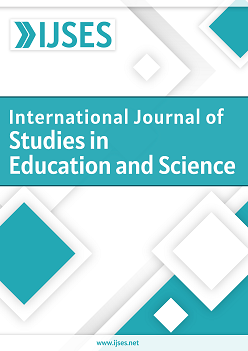Learning about or with and through ICTs: A Dilemma of Preschool Education in Zimbabwe
DOI:
https://doi.org/10.46328/ijses.34Keywords:
ECD, ICT, Preschool, ICT tools, Information and communication technology, Early childhood development, Preschool educationAbstract
Several studies concur that information and communication technologies (ICTs) in early childhood development (ECD) provide multiple opportunities for children (Hatzigianni & Margetts, 2012; Kerckaert, Vanderlinde, & van Braak, 2015). This study aimed to establish the use of ICTs in Zimbabwean preschools. A descriptive survey was employed. Based on the responses of 230 preschool teachers, two types of ICTs use were prominent in ECD. These were: learning about ICTs and learning with and through ICTs. Children were more engaged in learning about ICTs at government, council and mission schools, whereas at trust schools children were exposed to both and were afforded considerable opportunities to access the curriculum with/through ICT oriented instruction. Government, council and mission schools lacked ICT tools. Some ICTs were broken down and others absolute which limited access by both ECD teachers and learners.References
Kuyayama, A. & Nkomo, N. (2021). Learning about or with and through ICTs: A dilemma of preschool education in Zimbabwe. International Journal of Studies in Education and Science (IJSES), 2(2), 102-119.
Downloads
Published
Issue
Section
License
Articles may be used for research, teaching, and private study purposes. Authors alone are responsible for the contents of their articles. The journal owns the copyright of the articles. The publisher shall not be liable for any loss, actions, claims, proceedings, demand, or costs or damages whatsoever or howsoever caused arising directly or indirectly in connection with or arising out of the use of the research material.
The author(s) of a manuscript agree that if the manuscript is accepted for publication in the International Journal of Studies in Education and Science (IJSES), the published article will be copyrighted using a Creative Commons “Attribution 4.0 International” license. This license allows others to freely copy, distribute, and display the copyrighted work, and derivative works based upon it, under certain specified conditions.
Authors are responsible for obtaining written permission to include any images or artwork for which they do not hold copyright in their articles, or to adapt any such images or artwork for inclusion in their articles. The copyright holder must be made explicitly aware that the image(s) or artwork will be made freely available online as part of the article under a Creative Commons “Attribution 4.0 International” license.

This work is licensed under a Creative Commons Attribution-NonCommercial-ShareAlike 4.0 International License.





